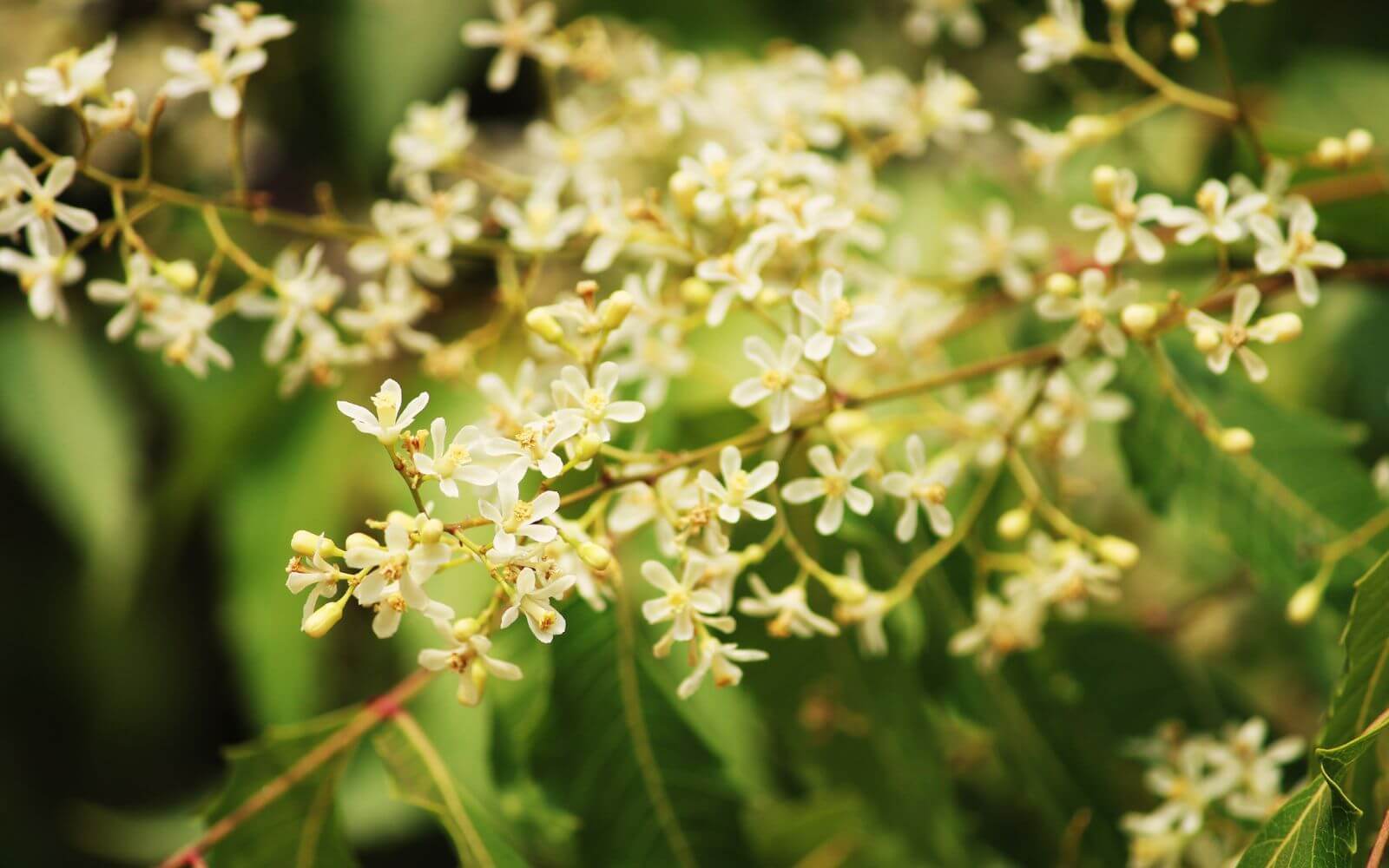
Azadirachtin – environmentally friendly biopesticide from the neem tree
Azadirachtin is a chemical compound belonging to the limonoid group. It is a secondary metabolite found in the seeds of the neem tree (Azadirachta indica). It is a highly oxidized tetranortriterpenoid derived from naringenin. It boasts aplethora of oxygen-bearing functional groups, including an enol ether, acetal, hemiacetal, tetra-substituted epoxide and various carboxylic esters.
The structure of Azadirachtin was definitively elucidated in 1985 by Wolfgang Kraus and colleagues at the University of Hohenheim. It possesses 16 stereocenters, a complex pattern of oxygen-containing functional groups and is highly influenced by intramolecular hydrogen bonding, as well as being UV-light instable.
Azadirachtin – main component of neem oil
Azadirachtin is the main component of neem oil, which is extracted from the pressed seeds of the neem tree (Azadirachta indica). It inhibits the larval development of numerous insects (ecdysteroid-like effects), while being relatively harmless to mammals. Due to its insecticidal properties it functions as a biopesticide. It affects molting, feeding, and reproduction in various stages of the insect life cycle.
Environmentally friendly, sustainable pest control
As a biopesticide, Azadirachtin is considered environmentally friendly and has low toxicity to non-target organisms, including humans and beneficial insects. It is widely used in organic farming and integrated pest management programs. Azadirachtin’s mode of action makes it effective against a broad spectrum of pests, making it a versatile and sustainable option for pest control. Ongoing research explores strategies to improve its stability and sustainability including the use of nanotechnology for controlled release.
→ We would be happy to advise you on this product in more detail and look forward to your inquiry.





 4c media
4c media